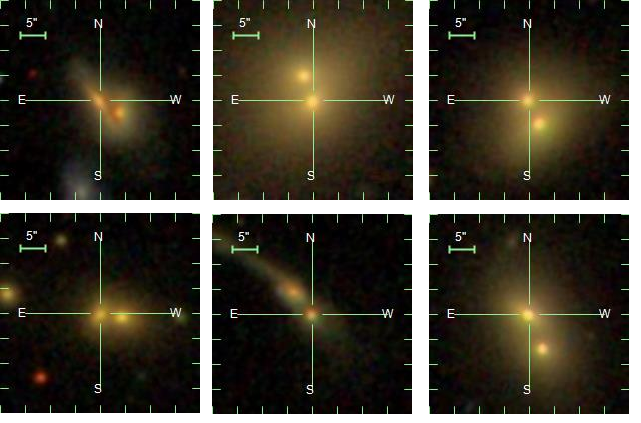An international team of astronomers and computer scientists from India and France have devised a numerical technique to automatically search for double nuclei galaxies. This could help them predict what could happen when neighboring galaxies like the Milky Way and the Andromeda collide.
Scientists need to study collisions between galaxies to predict uncertainties like whether the solar system would survive or be ripped apart from the violent mixing of stars and gas between the galaxies when they collide. For this, they need to hunt for closely merging galaxies. However, only a handful of such galaxies are known, as they are very rare. During the merging process, the nuclei of the individual galaxies come closer resulting in the formation of double nuclei galaxies.
In order to hunt for more merging galaxies in the open sky, an international team of Astronomers and Computer Scientists from APPCAIR, BITS Pilani Goa Campus, Indian Institute of Astrophysics (IIA), Indian Institute of Science Education and Research, Allahabad University, and the Paris Observatory, France have developed a new algorithm which has led to the discovery of thousands of double-nuclei galaxies. Out of these 159 were confirmed to have pairs of accreting supermassive black holes or active galactic nuclei (AGN) as they are usually called.
Supermassive black holes (SMBHs) have masses of a million to several billion times the mass of the sun. Accreting SMBH or AGN gives out enormous amounts of radiation over the entire electromagnetic spectrum. Detecting this radiation is one of the only ways of observing SMBHs in distant galaxies. So detecting AGN pairs is one of the best ways of tracing the mergers of massive black holes. However, it is extremely rare to find galaxies that have double-nuclei and dual AGN. In fact, detection of dual AGN is often only by accident, and before this study less than 50 were known. With time, such AGN pairs finally result in two supermassive black holes spinning around each other and giving out nano-Hz gravitational waves. The final merger of the SMBHs will give out a burst of gravitational waves.
Many of these double nuclei galaxies are at separations similar to the separation of the Milky Way and Andromeda galaxies. Their existence shows us how merging galaxies appear to change with time and how their SMBHs will appear before finally merging to form more massive black holes. Thus, studying a large sample of double nuclei galaxies can help predict how the Milky Way and Andromeda will appear as they merge in the future. This study also shows that galactic collisions can signal “the beginning of the end” for the individual AGN as they merge to form a more massive SMBH.
The investigators also found that the merging galaxies have a tendency to look red — indicating the presence of old stars and the decreased formation of new stars. Since star formation is the lifeblood of galaxies, red galaxies represent the old, evolved population of galaxies. Thus the study reveals how AGN can extinguish the star formation in galaxies leading to the formation of red and “dead” elliptical galaxies.
For this study, the team crafted a specialized image processing technique called GOTHIC that can automatically detect galaxies that visually resemble the galaxy MRK 739 which is one of the earliest detected dual AGN. GOTHIC used sophisticated image processing techniques and data from one of the largest optical surveys, the Sloan digital Sky Survey (SDSS) to detect such nuclei pairs.

MRK 739

Dual AGN derived from the GOTHIC survey (Bhattacharya et al. MNRAS 2023)
This study supported by DST has been published in the Monthly Notices of the Royal Astronomical Society.
“Earlier there were approximately only 50 known double nuclei galaxies with good images. Since this is too small a sample size for any AI model to train properly, we had to resort to old-school image processing” says Snehanshu Saha, the ML expert at APPCAIR, BITS Pilani K.K Birla Goa Campus, of the team. Next, they applied GOTHIC to a random sample of 1 million galaxy images to filter out the rare double-nuclei galaxies. “The process was tedious and it took many months to complete since terabytes of image data had to be downloaded. But the final result was totally worth it!” says Anwesh Bhattacharya, the lead author and creator of GOTHIC.
Mousumi Das from IIA, an autonomous institute of the Department of Science and Technology (DST)) pointed out, “Our data shows that dual AGN in galaxy mergers quench star formation. This is an important step in the evolution of star-forming galaxies into elliptical ones. Also, this method can be applied to find large samples of potential binary SMBHs that can be used to understand the nano-Hz gravitational background.” Francoise Combes from Paris Observatory, added, “Knowing precisely the number of double nuclei in this last step of mergers, will tell us how much time lasts this stage, and we will learn a lot on dark matter or modified gravity.”






























